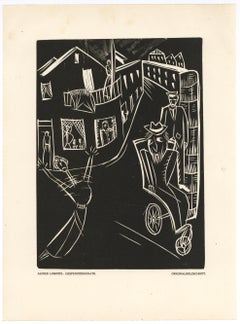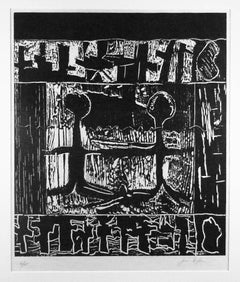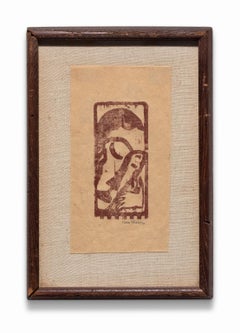Alfred Lomnitz Art
Alfred Lomnitz was a German painter, graphic artist and designer of Jewish denomination, later exile artist in England. He is attributed to the artists of the lost generation. Lomnitz attended the elementary school and the Friedrich-Wilhelm secondary school in Eschwege. His career aspiration as graphic artist and painter surprised no one in his family, as already several painters, poets and authors came from the family. On September 14, 1909, Lomnitz left Eschwege and moved to Kassel. There he probably did an internship for his future job. From October 1910 to October 1912, he attended the Grand-Ducal Saxon School of Applied Arts in Weimar. He was a student of Professor Henry van de Velde, but was strongly influenced by Paul Klee, who also taught there. Afterwards, Lomnitz returned to Kassel once more and on 9th October 1912, he left for Berlin. There he continued his education. When he was conscripted for military service, he already described himself as a painter. After the First World War, he was back in Eschwege for a while. In 1923, Lomnitz married in Berlin. In three districts, he ran the studios Litz for painting, graphics and design. In addition to his actual work as a painter and graphic designer, he designed vending machines for coffee and sandwiches.
Despite the then poor economic situation, Lomnitz undertook study trips to Paris, Ascona and Lake Maggiore. In 1926, he exhibited again in the gallery Neumann, which is now known as Neumann-Nierendorf, in which Max Beckmann, Marc Chagall, Otto Dix, Paul Klee, Oskar Kokoschka and other world-renowned artists were offered. Many of these painters knew Lomnitz personally. Lomnitz recognized early on the dangers that emanated from the National Socialist government in 1933, and emigrated to England. In London, he first worked as a freelance graphic designer and had an exhibition of his works in 1934 at the Ryman Gallery in Oxford. He worked as a graphic artist and window designer for well-known companies such as Lyons Tea, Brodericks, Simpsons, Wolseley and finally as an advertising manager for Swears and Wells. Since Lomnitz was a German citizen, he was in 1940 or 1941, interned in the Liverpool suburb of Huyton. After the war, he did not return to Germany - only through his exhibitions in the Free Secession and in the November Group. In 1919, Lomnitz had his first own exhibition in the Berlin gallery Neumann under the title “Woodcuts by Alfred Lomnitz.” The works were predominantly signed with LOM. For the time until 1923, there are no documents about his further career and whereabouts. His middle name indicates his affiliation to the Jewish community.
1920s Expressionist Alfred Lomnitz Art
Woodcut
1980s Expressionist Alfred Lomnitz Art
Woodcut
1920s Expressionist Alfred Lomnitz Art
Woodcut
1970s Expressionist Alfred Lomnitz Art
Woodcut
1910s Vienna Secession Alfred Lomnitz Art
Woodcut
1910s Expressionist Alfred Lomnitz Art
Engraving, Woodcut
1930s Expressionist Alfred Lomnitz Art
Woodcut
1970s Expressionist Alfred Lomnitz Art
Woodcut
Bernard LorjouBernard Lorjou "Pirouette au Galop" 1978 Expressionist Woodcut, Signed, H.C. Edn, 1978
1920s Expressionist Alfred Lomnitz Art
Woodcut
1920s Expressionist Alfred Lomnitz Art
Woodcut
1910s Expressionist Alfred Lomnitz Art
Engraving, Woodcut
1910s Expressionist Alfred Lomnitz Art
Engraving, Woodcut
1910s Expressionist Alfred Lomnitz Art
Engraving, Woodcut


